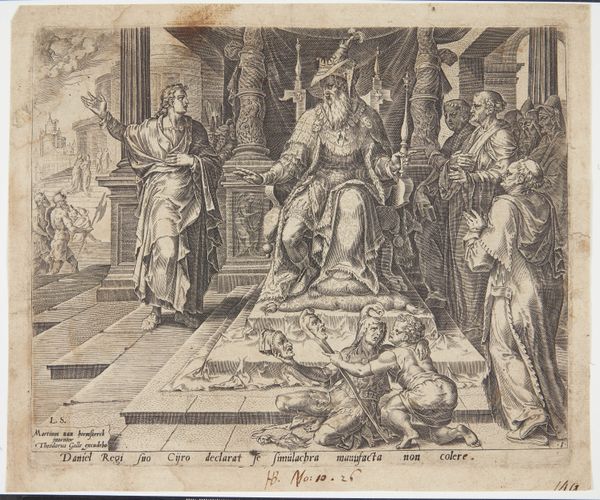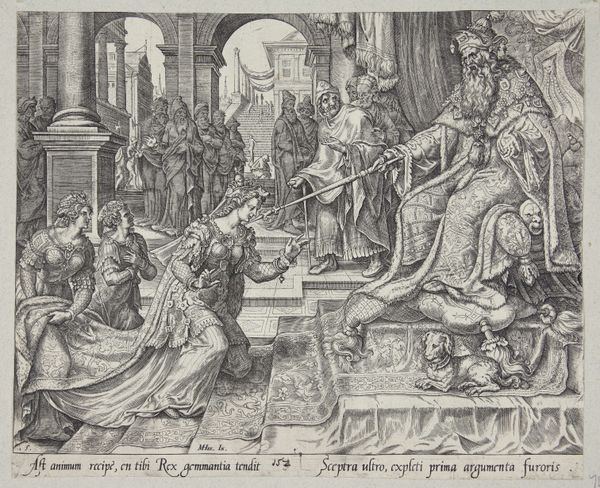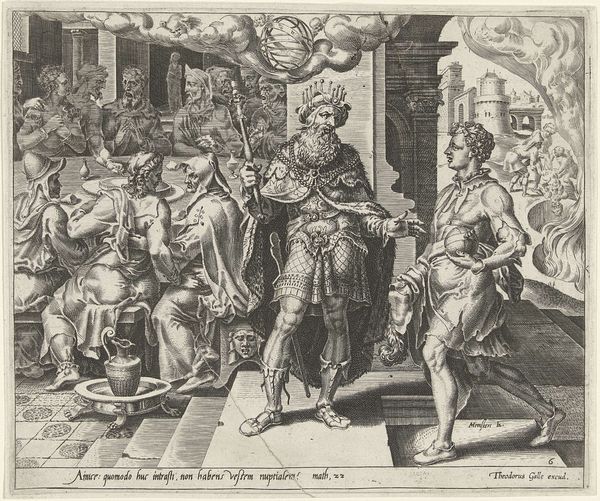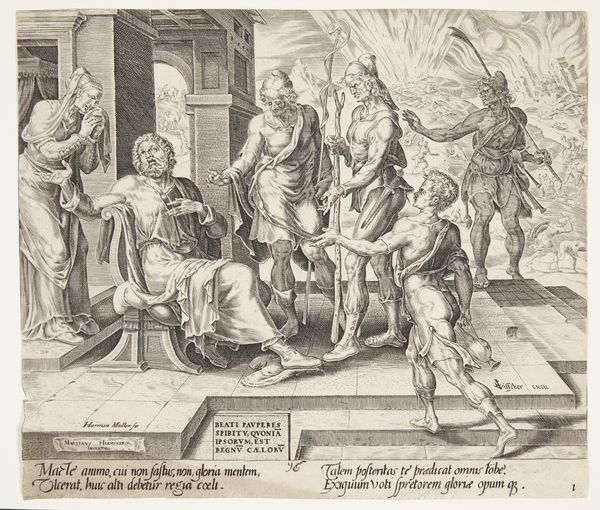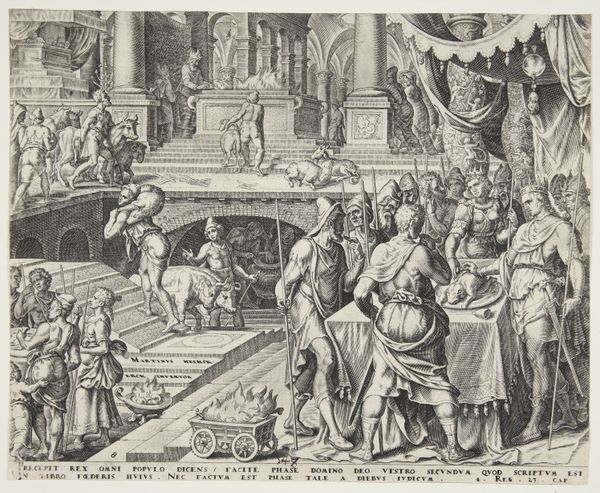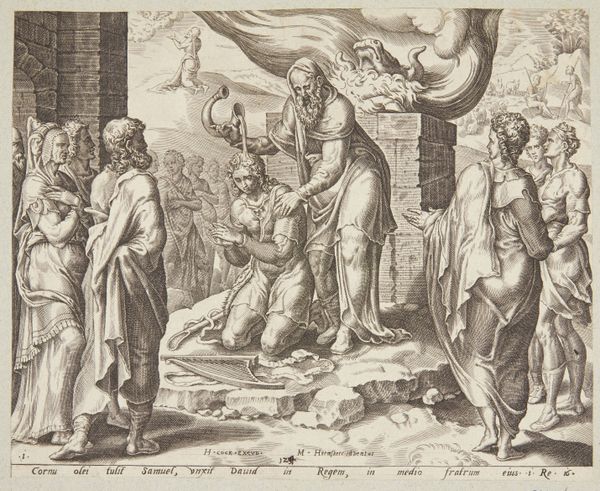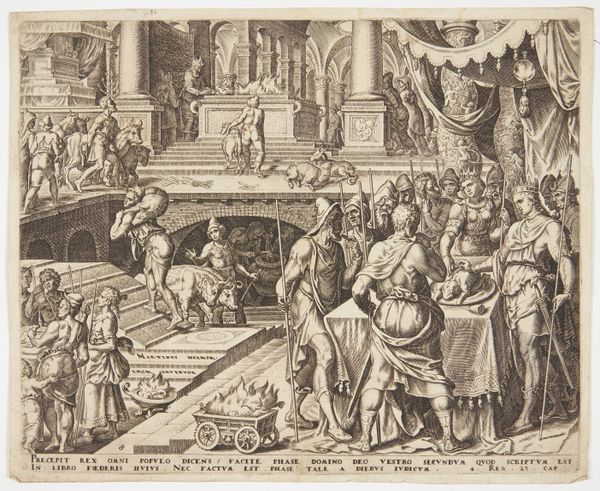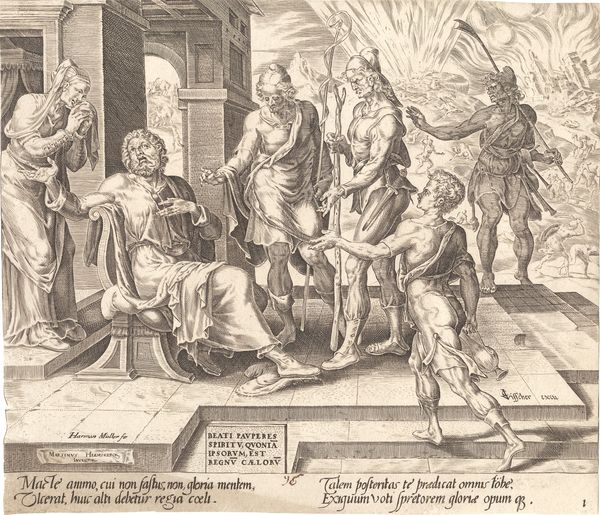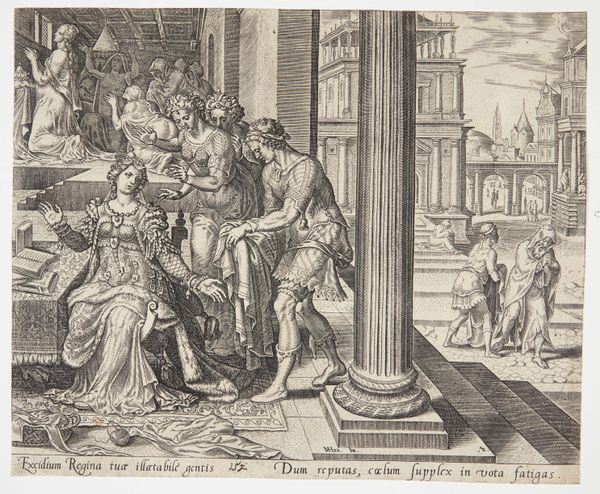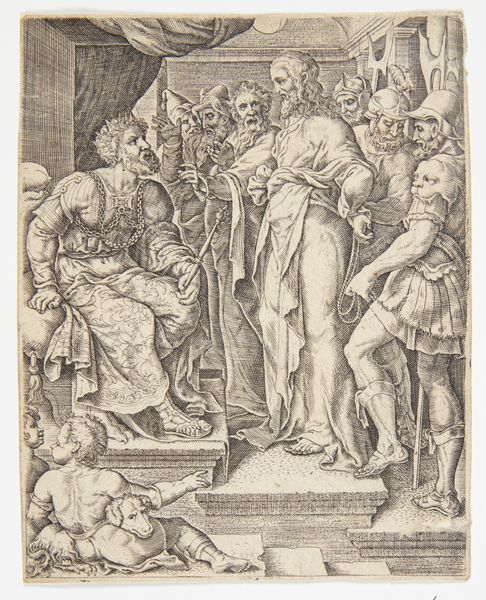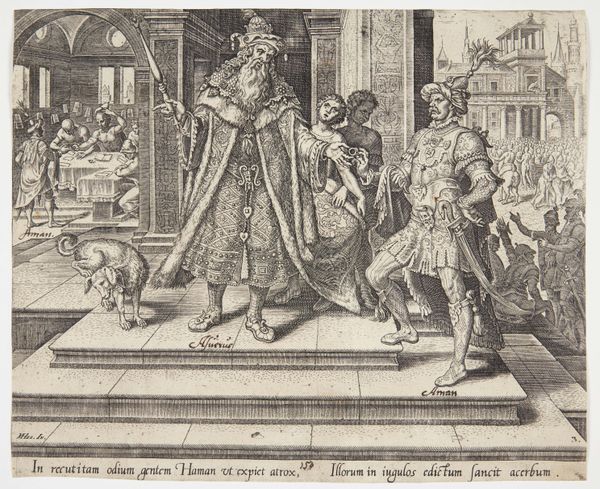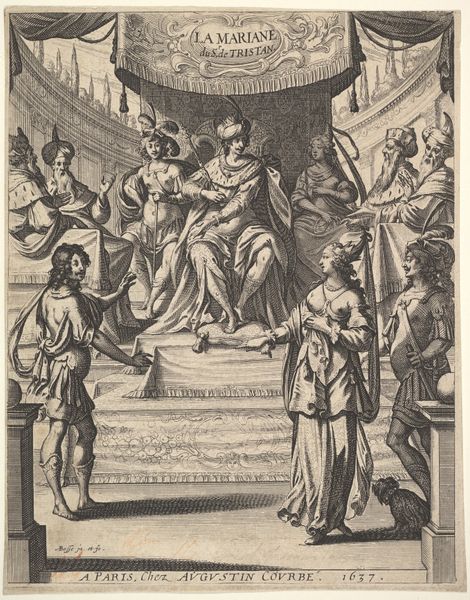
print, engraving
#
ink drawing
#
narrative-art
# print
#
mannerism
#
figuration
#
history-painting
#
engraving
Dimensions: 205 mm (height) x 250 mm (width) (monteringsmaal), 203 mm (height) x 249 mm (width) (bladmaal)
Philips Galle created this engraving, "Daniel refusing to worship Bel," sometime in the latter half of the 16th century. In it, Daniel stands before King Cyrus, rejecting the worship of idols. The print cleverly uses visual codes of power and authority to challenge their very basis. Cyrus is enthroned, surrounded by advisors, embodying earthly rule. Daniel, however, gestures towards the heavens, claiming divine authority as superior. Made in the Netherlands, this image emerged during the period of the Reformation, amidst intense religious and political conflict. Galle, working in Antwerp, would have been keenly aware of the power of images to sway public opinion and to question established institutions. The production of prints allowed for the wide distribution of such imagery. Historical sources, like religious pamphlets and political tracts, help us understand how such images participated in the debates of their time. By examining the social and institutional context, we recognize that art is rarely neutral; it often actively challenges existing social norms.
Comments
No comments
Be the first to comment and join the conversation on the ultimate creative platform.
